
Text copyright 2016 Scott Finazzo. Photographs copyright Amy Wewers except as noted below. Design and concept copyright 2016 Ulysses Press and its licensors. All rights reserved. Any unauthorized duplication in whole or in part or dissemination of this edition by any means (including but not limited to photocopying, electronic devices, digital versions, and the Internet) will be prosecuted to the fullest extent of the law. by ULYSSES PRESS P.O. by ULYSSES PRESS P.O.
Box 3440 Berkeley, CA 94703 www.ulyssespress.com ISBN: 978-1-61243-630-2 Acquisitions Editor: Casie Vogel Managing Editor: Claire Chun Project Editor: Bridget Thoreson Editor: Bill Cassel Proofreader: Lauren Harrison Index: Sayre Van Young Front cover/interior design and layout: what!design @ whatweb.com Cover artwork: knot photographs Scott Finazzo; red background Eky Studio/shutterstock.com; rope illustration maritime_m/shutterstock.com; knot icon Kilroy79.eps/shutterstock.com; house icon zelimirz.eps/shutterstock.com; cross icon tulpahn/shutterstock.com; cloud icon Crystal Home/shutterstock.com Interior artwork: knot photos Amy Wewers; rope illustration maritime_m/shutterstock.com Distributed by Publishers Group West NOTE TO READERS: This book is independently authored and published and no sponsorship or endorsement of this book by, and no affiliation with, any trademarked brands or other products mentioned within is claimed or suggested. All trademarks that appear in this book belong to their respective owners and are used here for informational purposes only. The authors and publishers encourage readers to patronize the quality brands mentioned in this book. Table of Contents
Guide
Contents

There is something awe-inspiring about seeing a person who is proficient at working with rope. Whatever the purpose may betying something down, hoisting something up, or any of a thousand other random reasonswatching a skilled person take a length of rope and manipulate it is not dissimilar to watching an artist paint. It demands respect at the same time that it creates a hint of envy.
Underlying the beauty of knotcraft is the functionality of it: Knots are works of art that have a practical application. Their purpose is to make some aspect of life easier. As long as humans have been walking the Earth, vines and strands of whatever material is available have been braided to create rope to pull, drag, hoist, and carry anything and everything. There is evidence of knots being used dating all the way back to the time of cave dwellers. As humankind has progressed knots have been used in construction, boating, fishing, farming, and just about any other application you can imagine. Ropes and knots played major roles in the construction of some of the worlds greatest man-made structures.
The pyramids of Egypt, the Roman Colosseum, and the Great Wall of China are just a few examples of what can be accomplished with very little technology by maximizing the strength of rope and reaping the benefits of the mechanical advantage it affords. Humans have been to the highest and lowest points on this planet thanks, in part, to ropes and knots. The deepest caves and the peak of Mount Everest were only conquered because ropes and knots enabled people and equipment to ascend and descend, and to do so safely. Time really seemed to pass even though I was falling clear and I realized that unless the rope came tight fairly soon, I would come to a rather sticky end on the bottom of the crevasse. Sir Edmund Hillary on Mount Everest While knots have certainly evolved over time, many knots have enduring characteristics that render them just as effective today as they were hundreds or even thousands of years ago. Knotcraft is a rare clash of nostalgia and the contemporary.
Though knots have been used throughout history, the earliest known books on knots are the formal manuals on seamanship written around 1800. Since then, there has been a great deal of literature on the subject. Perhaps the most famous is the 1944 publication The Ashley Book of Knots, which was written by author, artist, sailor, and knot expert Clifford W. Ashley. It includes over 2,000 knots with over 7,000 illustrations and has been heralded as the bible of knots. With all of the other books on knots out there, especially one as inclusive as Ashleys, why another one? Why this one? Allow me to explain.
I have been an adventurous and outdoorsy type of person all of my life. Having climbed mountains and wandered out into and across the ocean, I am familiar with the uses and benefits of tying knots. I have also been a firefighter for nearly 20 years and for almost 15 of those years I have been a rope rescue technician. In that capacity I have been trained to utilize ropes and knots in the most critical of all environments: life safety. I have also written several books on disaster preparation and response. The Preppers Workbook helps the reader prepare for disaster, and The Neighborhood Emergency Response Handbook and Preppers Survival Medicine Handbook are guides on what to do after a catastrophe.
Factoring in all of those things, my goal for this book, The Preppers Guide to Knots, is to ensure that you are prepared to tie knots when the need arises. When you need a knot for a specific purpose, there is nothing quite like being able to tie it. Simply tying the right knot at the right time affords you a feeling of accomplishment and confidence, over and above the practical use of the knot. With this in mind Ive chosen 100 knots that are common, practical, easy to tie, easy to remember, and useful in critical situations. This book will teach you how to tie them and when to use them. You wont necessarily want or need to learn them all; a handful of knots can get you by in most situations.
But if youre the sort of person who appreciates preparation, for whom just knowing the basics isnt enough, this book will provide you with a variety of tested and practical options. Whether you want to join two ropes together (bends), attach something to a rope (hitches), stop unraveling (stopper knots), bind something (binding knots), or create a loop (loops), this book will show you several knots that can accomplish whatever task you are facing. The way to truly be prepared is to learn at least a few knots to accomplish each task and a way to tie them that is comfortable for you and easy to remember. Knot proficiency will only come with repetition. Get a length of rope at least a couple of feet long that is supple enough to enable you to easily tie knots, and keep it accessible. When there is downtime at work or at home, or if you are just sitting around watching television, tie some knots.
Tie variations of the knots. Learn new ways to tie the knots you already know. Its a simple way to learn during your leisure time that reaps significant benefits when the time comes. By repeatedly tying knots you develop muscle memory, and before you know it, you can quickly tie the knots you need without having to really think about it. In addition to tying your own knots, being able to recognize a well-tied knot can be extremely useful. My friend, fellow firefighter, sailing buddy, and rope guru Kent Saturday taught me years ago that when you are the person who is going to be hanging by a rope off of a rooftop, tower, or cliff, you will want to be able to look at every knot before you go over, recognize it, and know if it is tied correctly.


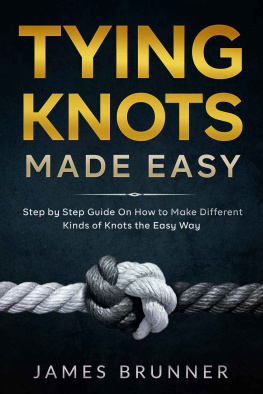
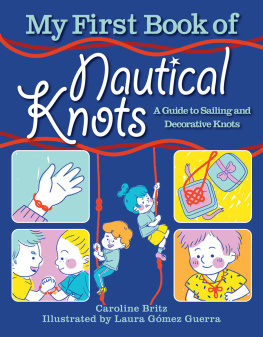
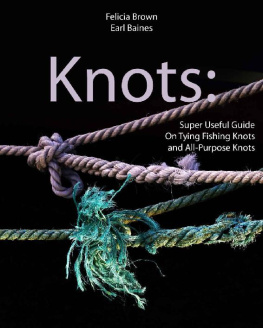
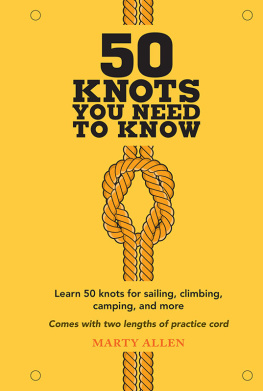

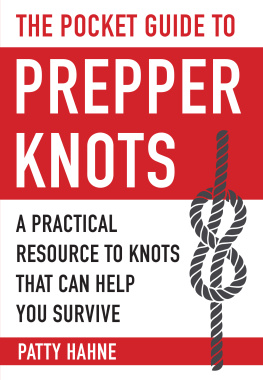
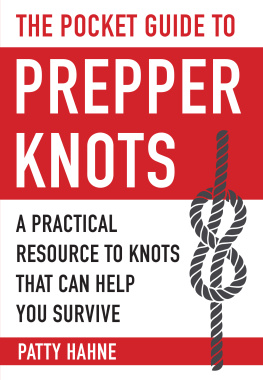

 Text copyright 2016 Scott Finazzo. Photographs copyright Amy Wewers except as noted below. Design and concept copyright 2016 Ulysses Press and its licensors. All rights reserved. Any unauthorized duplication in whole or in part or dissemination of this edition by any means (including but not limited to photocopying, electronic devices, digital versions, and the Internet) will be prosecuted to the fullest extent of the law. by ULYSSES PRESS P.O. by ULYSSES PRESS P.O.
Text copyright 2016 Scott Finazzo. Photographs copyright Amy Wewers except as noted below. Design and concept copyright 2016 Ulysses Press and its licensors. All rights reserved. Any unauthorized duplication in whole or in part or dissemination of this edition by any means (including but not limited to photocopying, electronic devices, digital versions, and the Internet) will be prosecuted to the fullest extent of the law. by ULYSSES PRESS P.O. by ULYSSES PRESS P.O.  There is something awe-inspiring about seeing a person who is proficient at working with rope. Whatever the purpose may betying something down, hoisting something up, or any of a thousand other random reasonswatching a skilled person take a length of rope and manipulate it is not dissimilar to watching an artist paint. It demands respect at the same time that it creates a hint of envy.
There is something awe-inspiring about seeing a person who is proficient at working with rope. Whatever the purpose may betying something down, hoisting something up, or any of a thousand other random reasonswatching a skilled person take a length of rope and manipulate it is not dissimilar to watching an artist paint. It demands respect at the same time that it creates a hint of envy.